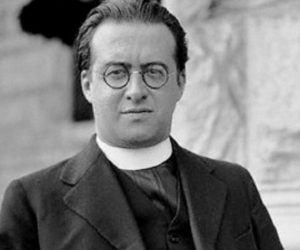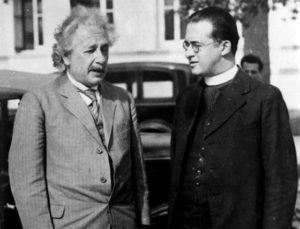Fun Fact: Big Bang theory originated in Belgium
The mystery of the universe and how did it start is a question that has plagued humanity for centuries. In the past, humans sought to explain the phenomena with spirituality, and then later with material physics. But it took a Belgian priest by the name of Georges Lemaître to theorise an idea in which a lot of our current understanding of the origins of the universe works off today.

Georges Lemaître (1894–1966) was classically schooled at a Jesuit secondary school, the Collège du Sacré-Coeur, in Charleroi. At 17, he began studying civil engineering at the Catholic University of Leuven but his studies were interrupted In 1914, at the outbreak of World War I were he opted to serve as an artillery officer in the Belgian army. After the war, he received the Belgian War Cross with palms.
After the war, Lemaître would go on to complete numerous studies in scientific fields. In 1920 he obtained a physics and mathematics doctorate, in 1923 he was ordained a priest and graduated from Cambridge University and later went on to MIT before returning to Leuven university as a part-time lecturer.
Much of Lemaître’s works were applying Albert Einstein‘s groundbreaking theory of general relativity to cosmology, and It was at Leuven University in 1927, that the work for the “Big Bang” theory would begin. He gained acclaim upon publishing a report which stipulated a new idea of an expanding universe, derived from General Relativity; it provided the first observational estimation of the Hubble constant.
Einstein, while not taking exception to the maths presented, refused to accept the idea of an expanding universe. Lemaître recalled him commenting “Your calculations are correct, but your physics is atrocious.”

Having taken some time, Lemaître further built upon his theory to conclude the universe expanded from an initial point, which he called the “Primordial Atom“.
In January 1933, Lemaître and Einstein travelled together to attend a series of seminars in California. After Lemaître detailed his theory, Einstein stood up, applauded, and is supposed to have said, “This is the most beautiful and satisfactory explanation of creation to which I have ever listened.”
In 1933, Lemaître achieved his greatest public recognition when he resumed his theory of the expanding universe and published a more detailed version in the Annals of the Scientific Society of Brussels. Newspapers around the world began calling him the famous Belgian scientist and the leader of the new cosmological physics.
After which, he was elected to many academic roles within society, Including the Pontifical Academy of Sciences in 1936, which he took an active role there and served as its president until his death from a heart attack in March 1960.



